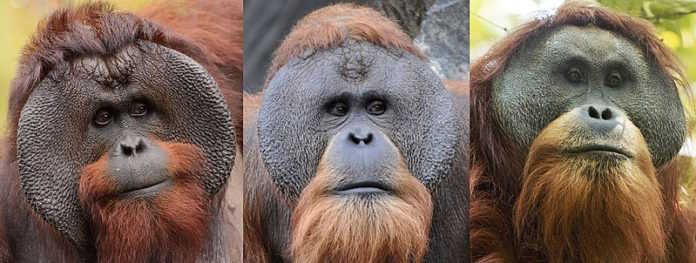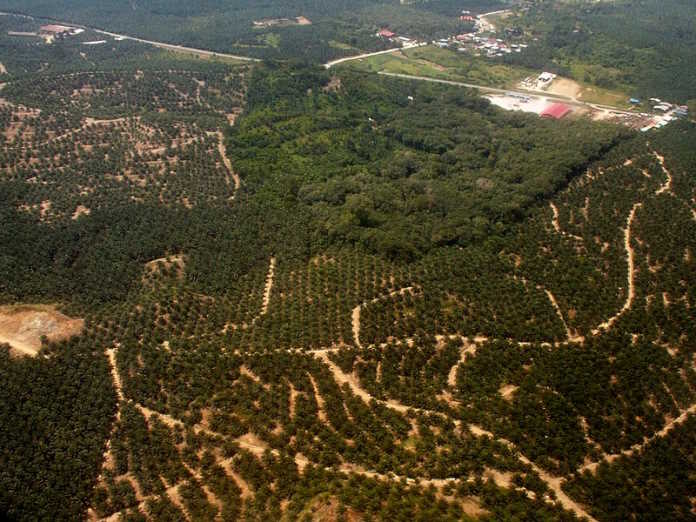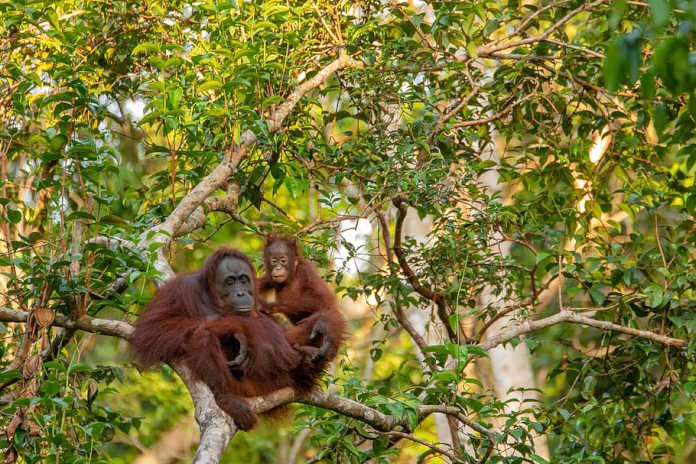
In the lush rainforests of Southeast Asia, a remarkable creature swings through the treetops, capturing our hearts with its intelligence and charisma – the orangutan. But behind their endearing appearances lies a tale of struggle that intertwines with the challenges of biodiversity loss, poaching, and the looming threat of climate change. This article dives into the critical factors impacting orangutans and explores the urgent need for their conservation.

Orangutans, our distant cousins, are fascinating primates that belong to the Pongo genus. They are known for their distinctive reddish-brown hair, human-like features, and remarkable intelligence. These amazing creatures are divided into three species: the Sumatran orangutan (Pongo abelii), the Tapanuli orangutan (Pongo tapanuliensis), and the Bornean orangutan (Pongo pygmaeus).
Beginning with the Bornean orangutans, indigenous to the forests of Borneo, their remarkable physicality and composed demeanor command attention. Their substantial size and tranquil disposition evoke a sense of seasoned wisdom, reflecting the natural harmony of their environment.
Transitioning to Sumatra, we encounter the Sumatran orangutans, characterized by their more diminutive stature and insatiable curiosity. Their inquisitive nature and exploratory tendencies exemplify a unique adaptability to their surroundings, underlining the constant interplay between the creatures of the forest and their ecosystem.
The Tapanuli orangutans, residing exclusively in a specific region of Sumatra, present an air of exclusivity with their distinctive behaviors and vocalizations. This species serves as a testament to the intricate ecological niches within rainforests, showcasing the intricacies of their habitat’s balance.

Sadly, all these species are facing a critical threat of extinction and are listed as Critically Endangered by the International Union for Conservation of Nature (IUCN).
A Closer Look at Their Plummeting Population
The main reason behind the decline of orangutan populations is habitat destruction and fragmentation due to illegal logging, agriculture, and palm oil plantations. This has rapidly declined their numbers, with nearly 100,000 orangutans disappearing in Borneo alone over the past 16 years. The most alarming drops in orangutan populations were observed in regions that had undergone deforestation and transformation into agricultural zones. Strikingly, the highest count of orangutan losses occurred in forests that had been selectively logged, which are the primary habitats for orangutans. In these forested domains, human-related pressures, encompassing conflict-related killings, poaching, and capturing young orangutans for the pet trade, have likely played a pivotal role in driving the decline.
Orangutans are known as “gardeners of the forest” for their role in maintaining the ecosystem’s health. Their diet, which consists of fruits, leaves, and insects, contributes to seed dispersal and forest regeneration. However, as their habitats shrink, the intricate web of biodiversity suffers. Deforestation strips away not only the orangutans’ home but also that of countless other species, further threatening the delicate balance of these ecosystems. Palm plantations have devastated the decline of orangutan populations, those remarkable and endangered creatures that call the rainforests of Borneo and Sumatra home. As palm oil plantations expand, they bring about immense deforestation, robbing orangutans of their natural habitats and pushing them toward the brink. These intelligent primates, who spend their lives among the trees, face habitat loss and isolation as their forest homes are torn apart. Tragically, conflicts with humans arise as orangutans search for food in these new landscapes, often leading to their harm.

The illegal pet trade poses yet another grave threat to orangutan survival. Baby orangutans are often captured after their mothers are killed, leading to physical and psychological trauma for the young and a demographic crisis for the species. These intelligent and emotionally complex beings are not meant for captivity; they require the vast expanse of the rainforest to thrive.
As if these challenges weren’t daunting enough, the specter of climate change looms large. Rising temperatures and shifting rainfall patterns alter the habitats orangutans rely upon. Additionally, deforestation and the burning of peatlands release vast amounts of carbon dioxide into the atmosphere, exacerbating global climate change. The cycle of destruction feeds upon itself, as a warming planet further endangers the very forests orangutans depend on.
Diverse Conservation Efforts
Central to orangutan conservation is the defense of their natural abode – the lush rainforests that furnish nourishment and sanctuary. Dedicated organizations strive to uphold the woods that sustain both orangutans and the broader ecosystem by establishing protected domains, reforestation ventures, and habitat corridors. Anti-poaching campaigns are firmly at work and stand resolute against the shadowy realm of illegal wildlife trade. Via vigilant patrols, astute surveillance, and collaboration with law enforcement, these initiatives disrupt the networks that jeopardize orangutans’ existence.
For orangutans already impacted, rescue and rehabilitation centers provide a vital haven. These sanctuaries extend medical care, sustenance, and safe haven to wounded or orphaned orangutans, ultimately aiming for their reintroduction into their natural milieu. Integral to this conservation odyssey is community involvement. Educating locals about orangutans’ significance and their ecological role nurtures a sense of custodianship. Concurrently, sustainable livelihood initiatives offer alternative practices that imperil forests and their inhabitants.
Modern technology also plays a pivotal role – from drones surveilling orangutan populations to DNA analysis enriching genetic studies, innovation augments conservation efforts. As wordsmiths, we wield the quill that can amplify these narratives and rouse readers to action. We contribute to the collective quest to ensure orangutans persist in their arboreal realm by heightening awareness, endorsing organizations, and making mindful choices.

The plight of orangutans paints a poignant picture of the challenges faced by our natural world. Their survival is entwined with the health of our planet, highlighting the critical need for immediate action. As individuals, we can support conservation efforts by making informed consumer choices, supporting organizations working in the field, and raising awareness like BioDB. Only through a collective effort can we ensure that the mesmerizing calls of orangutans continue to echo through the rainforests for generations to come. Just as the orangutans swing through the forest’s embrace, may their survival sway in the hearts of all who read these lines.
“Chimpanzees, gorillas, orangutans have been living for hundreds of thousands of years in their forest, living fantastic lives, never overpopulating, never destroying the forest. I would say that they have been in a way more successful than us as far as being in harmony with the environment.” – Dr. Jane Goodall
Resources:
- https://leakeyfoundation.org/in-16-years-borneo-lost-more-than-100000-orangutans/#:~:text=Over%20a%2016%2Dyear%20period,of%20changes%20in%20land%20cover.
- https://www.washingtonpost.com/news/speaking-of-science/wp/2018/02/15/the-worlds-orangutan-population-shrank-by-half-in-the-last-16-years/
- https://orangutan.org/rainforest/the-effects-of-palm-oil/
By: Assaf Levy, BioDB
Author bio: Assaf Levy is the Founder & CEO of BioDB.com – a group tasked with collecting conservation data, raising awareness for biodiversity loss and fundraising.
Photo of Assaf Levy here: https://biodb.com/species/human/











